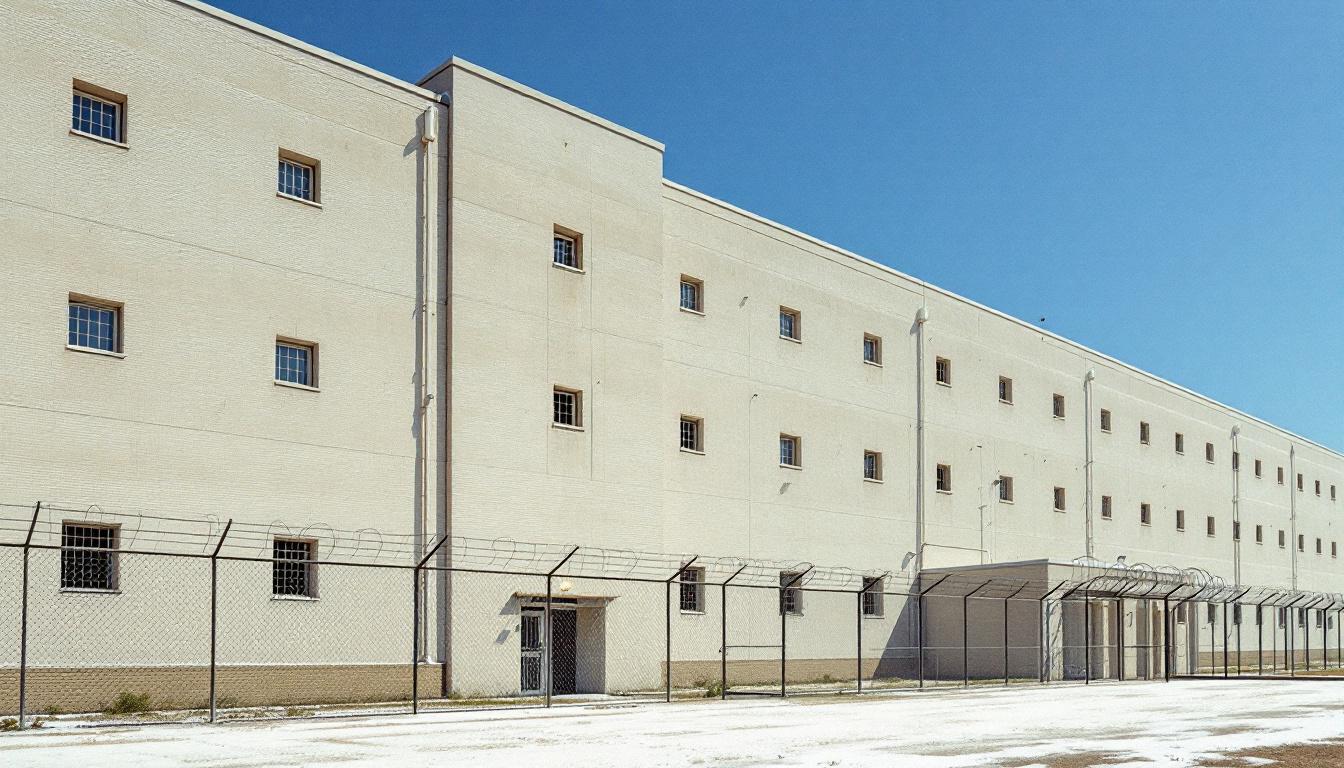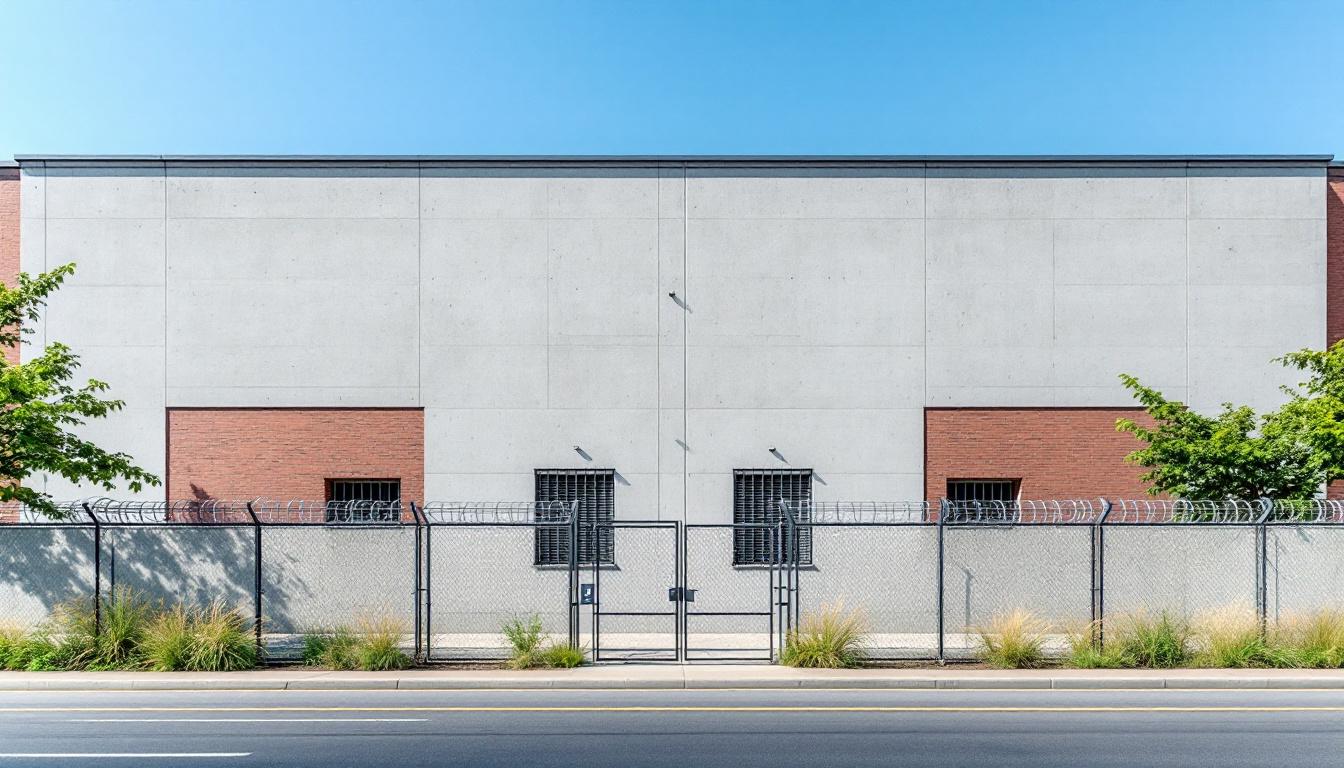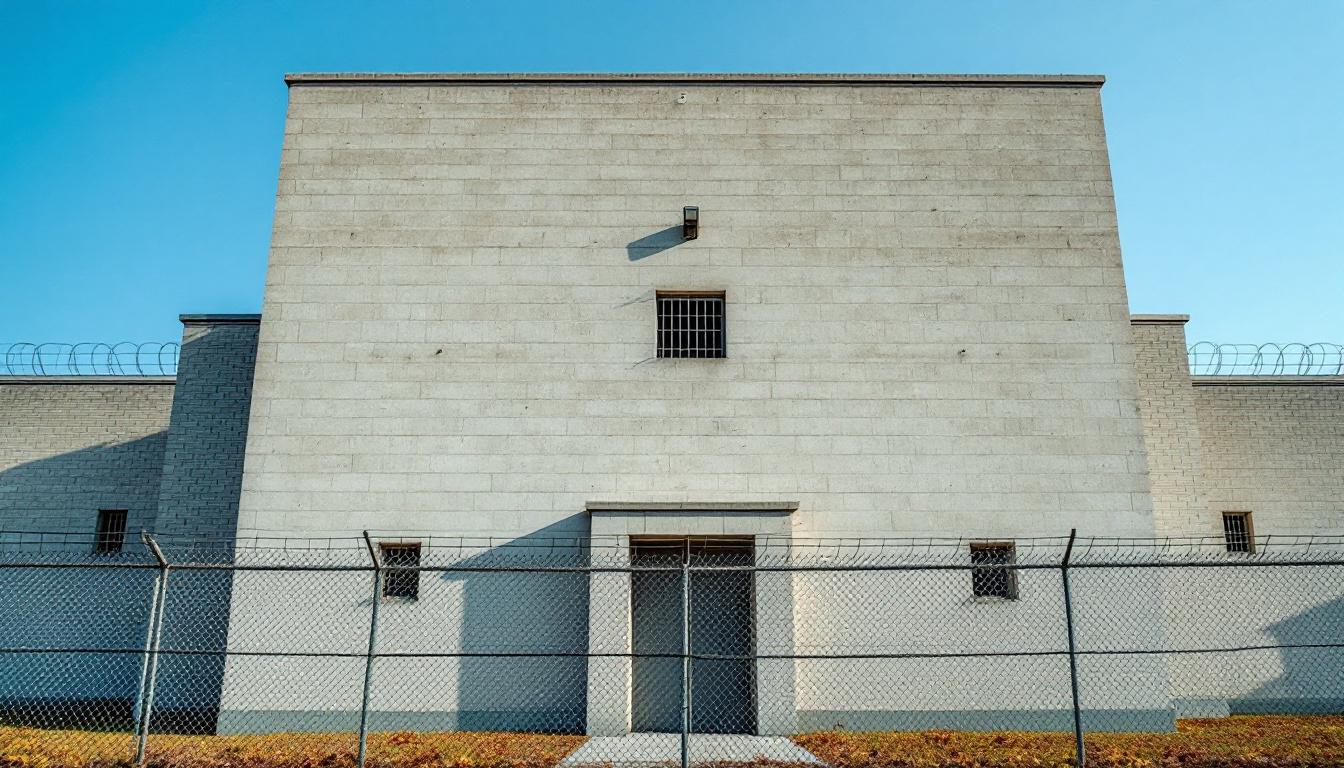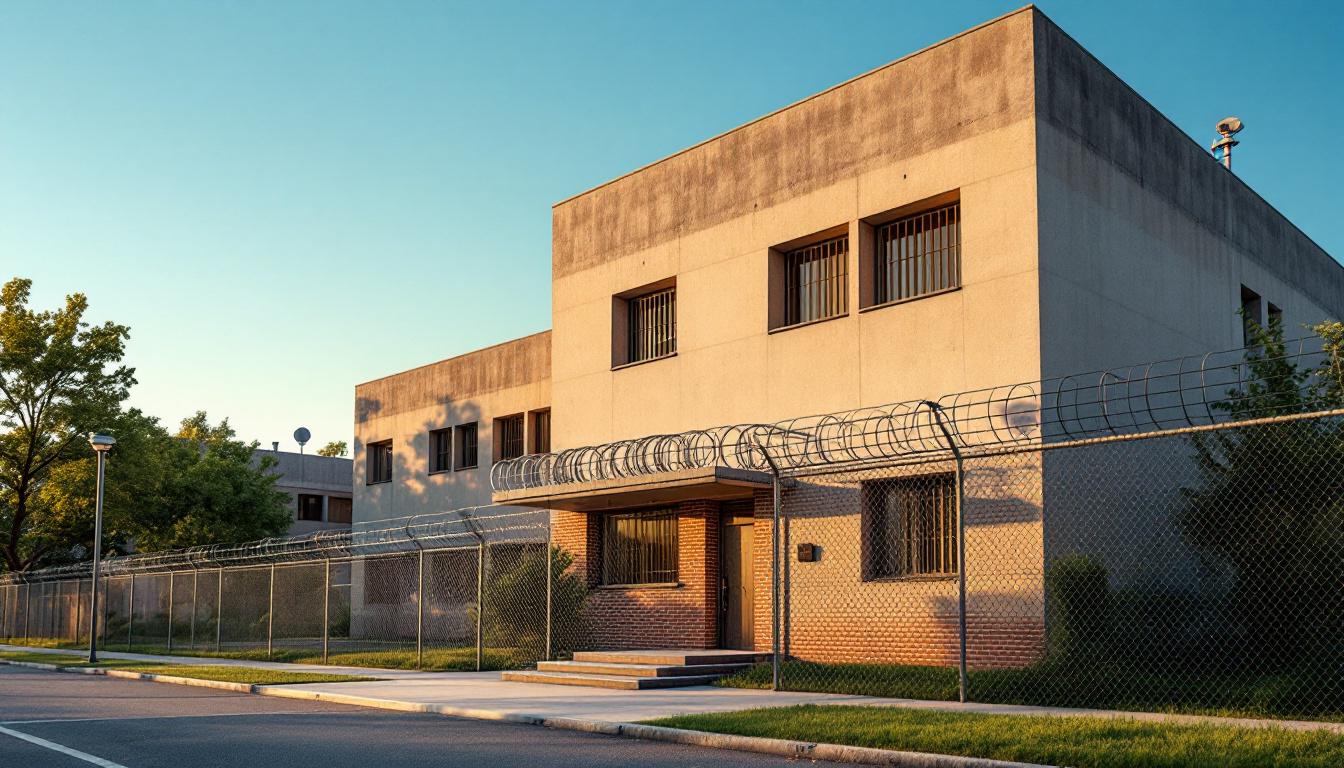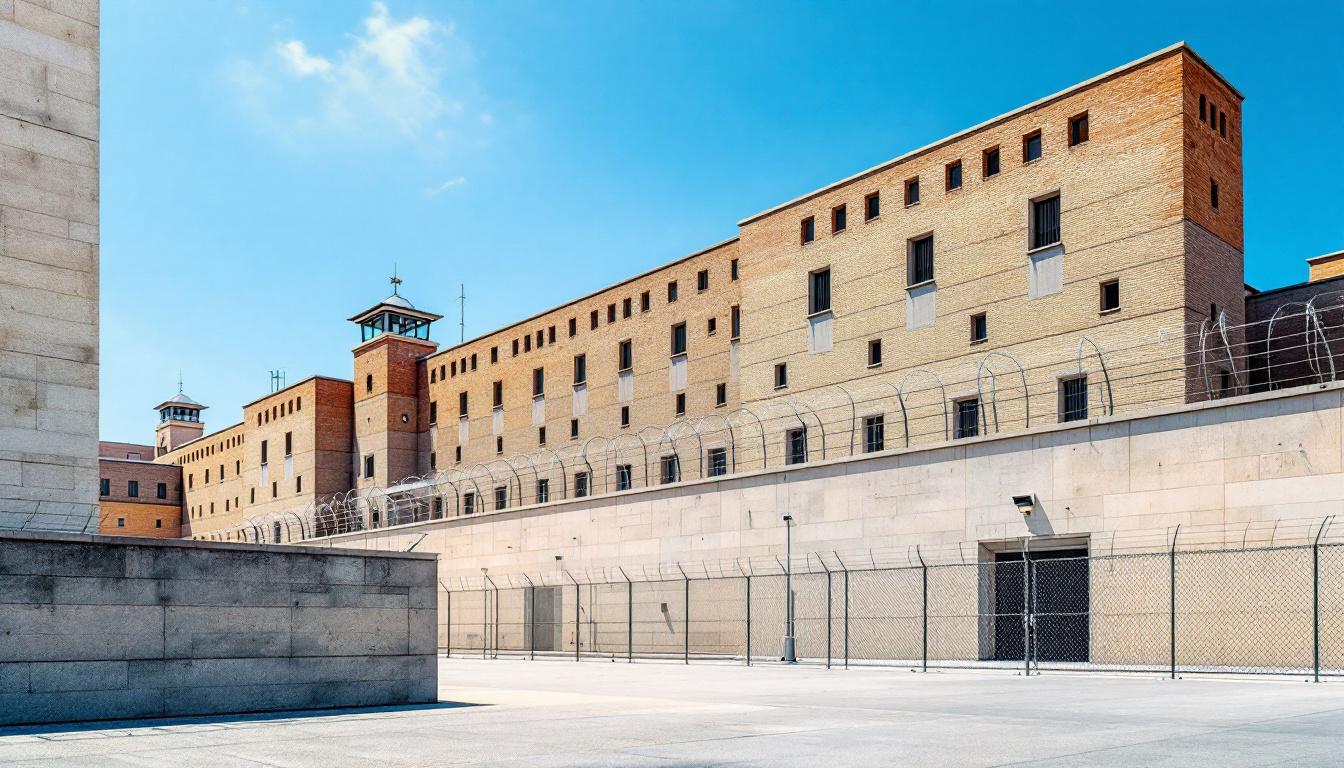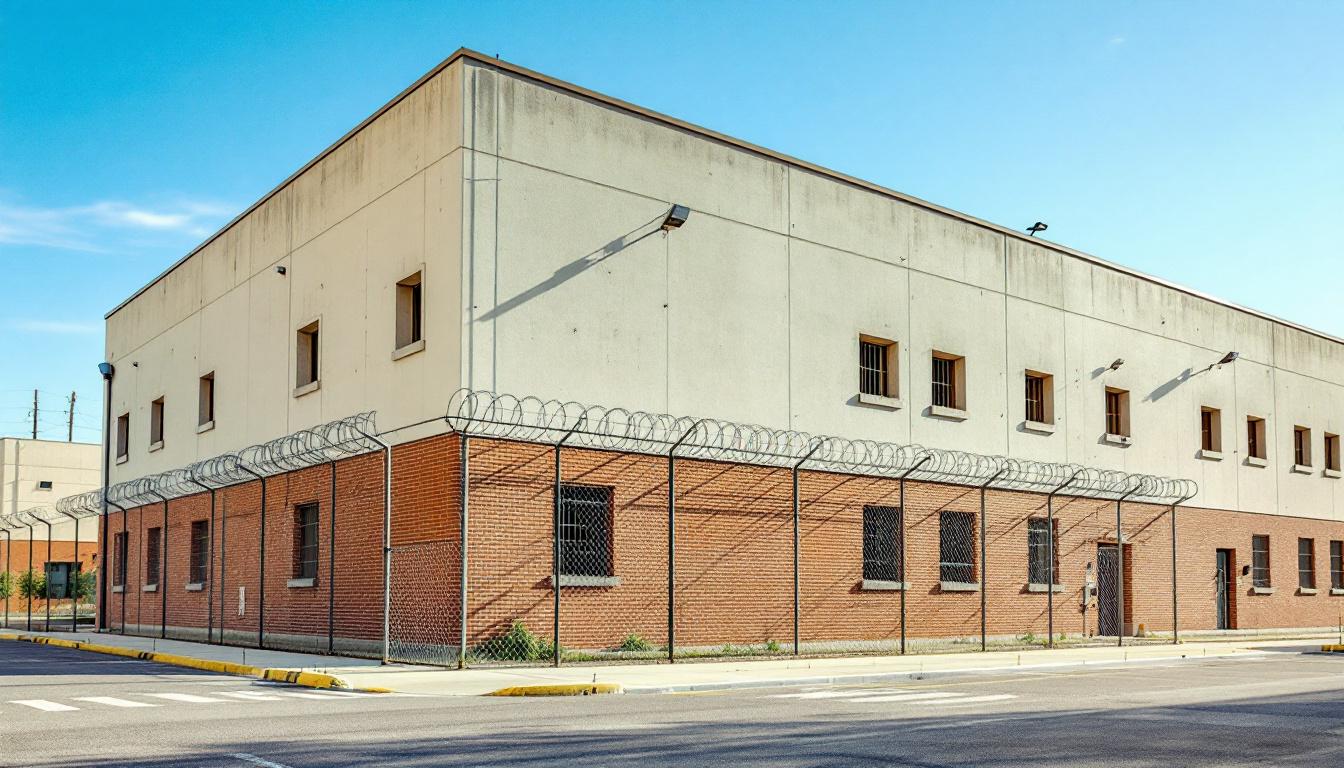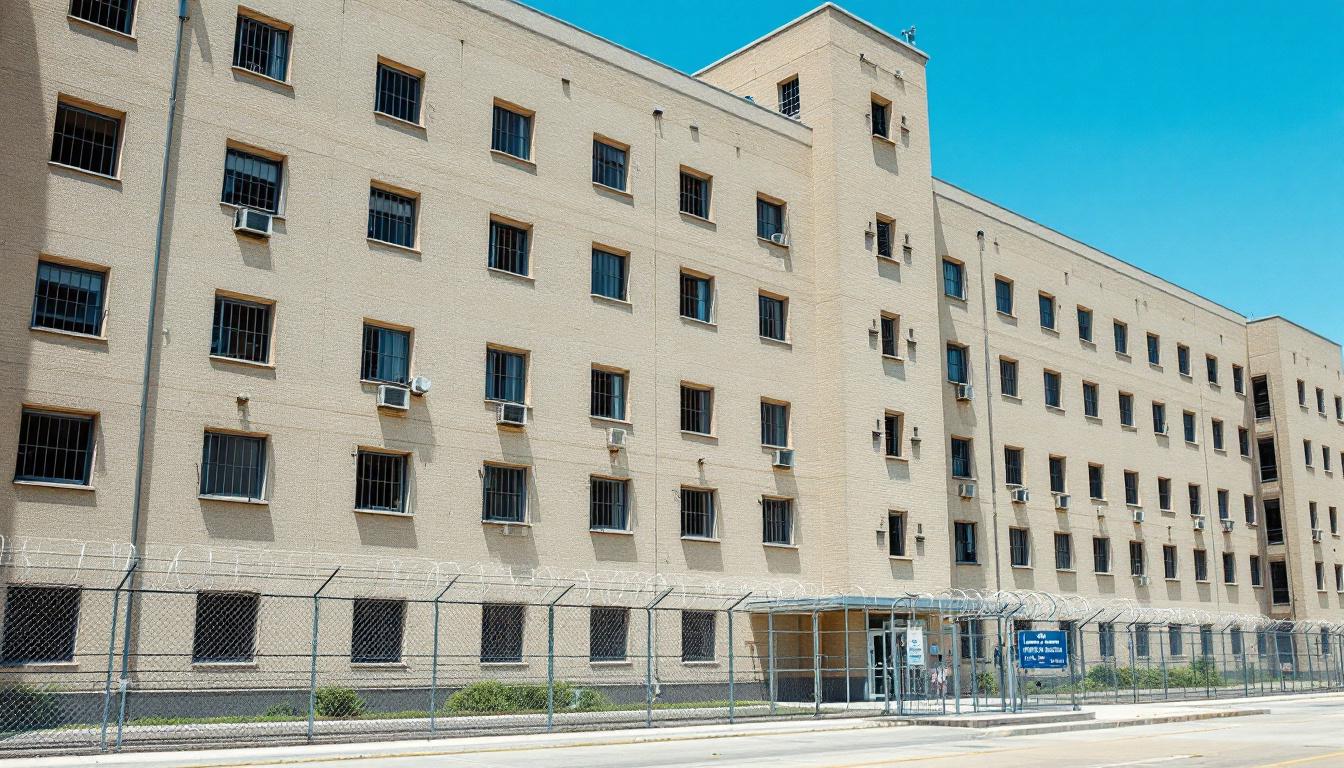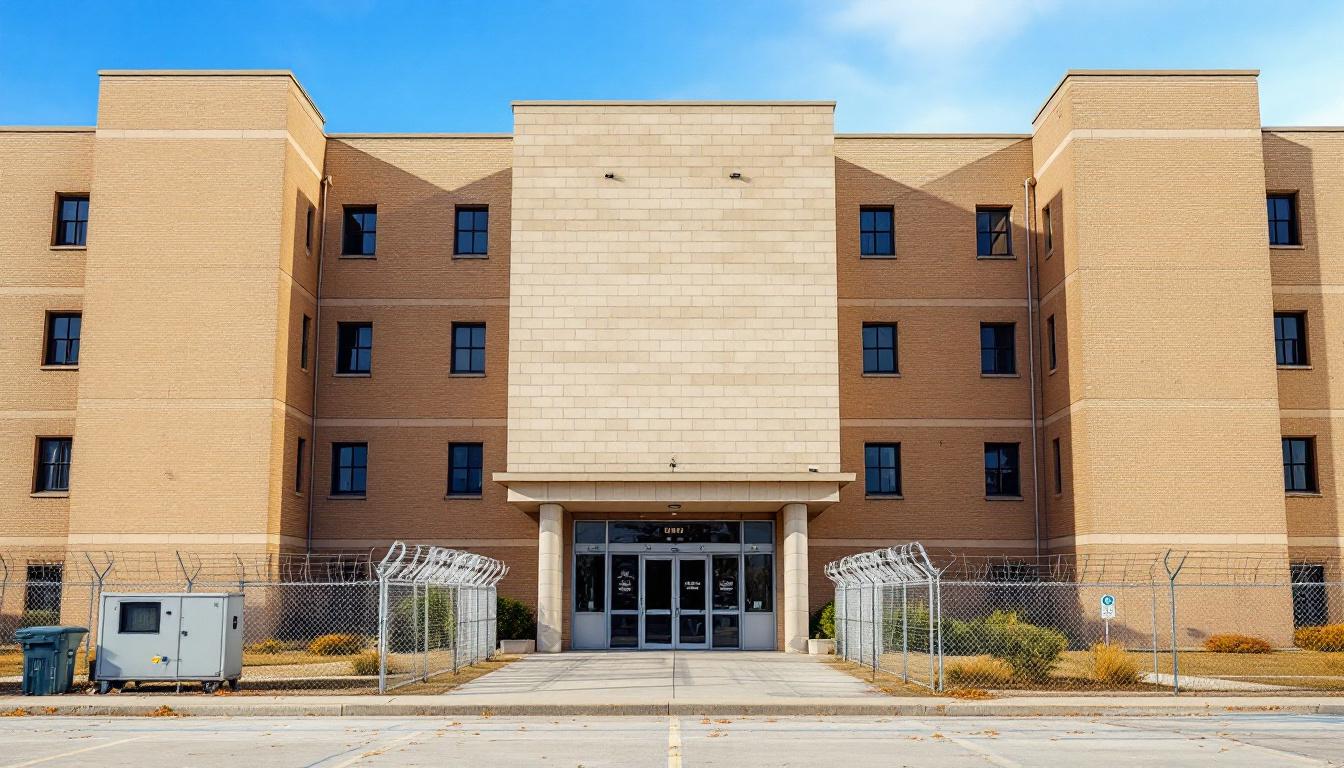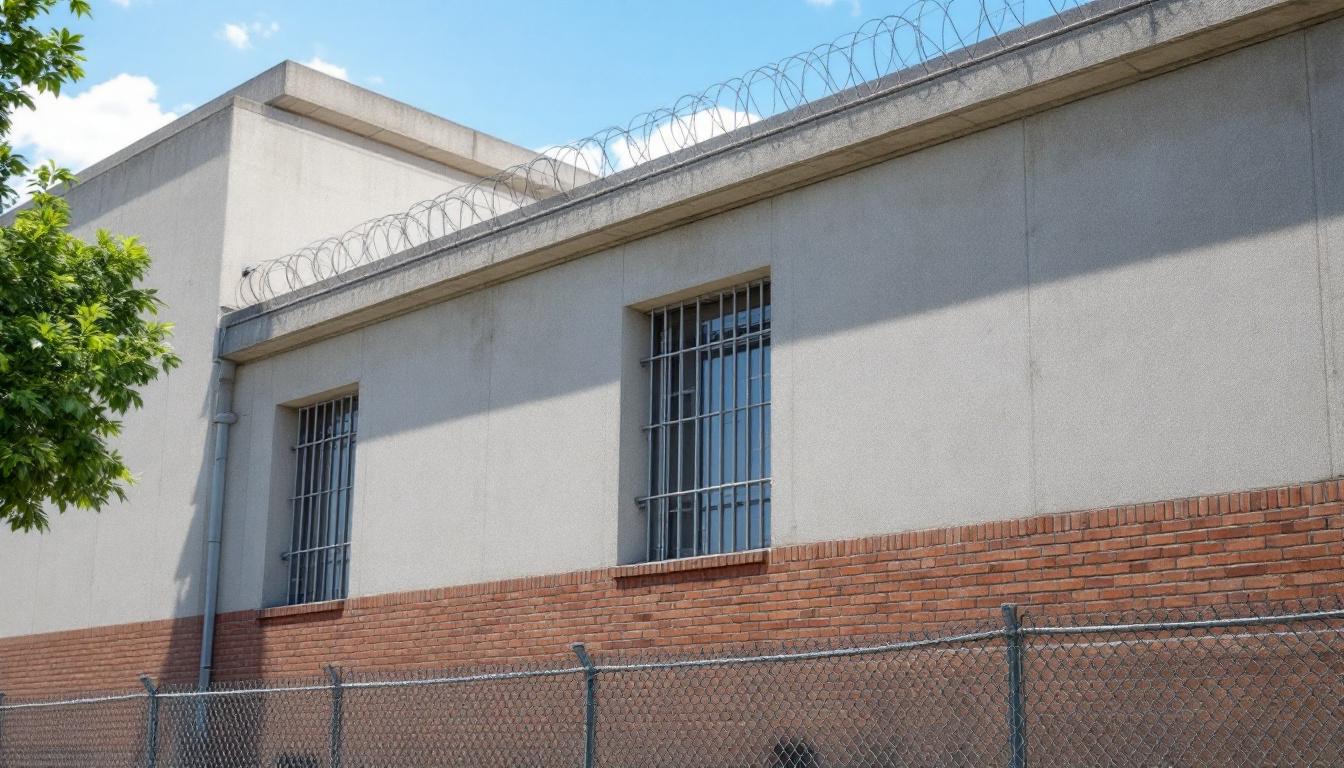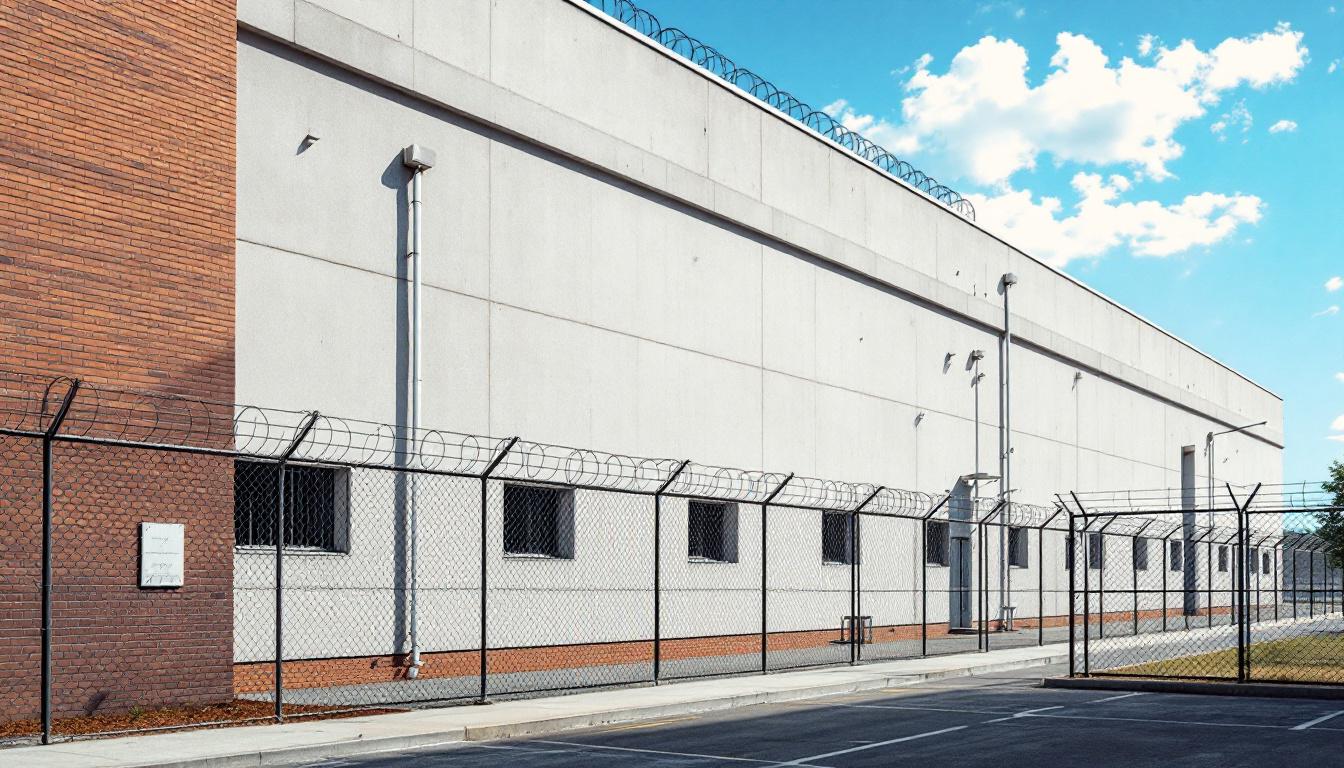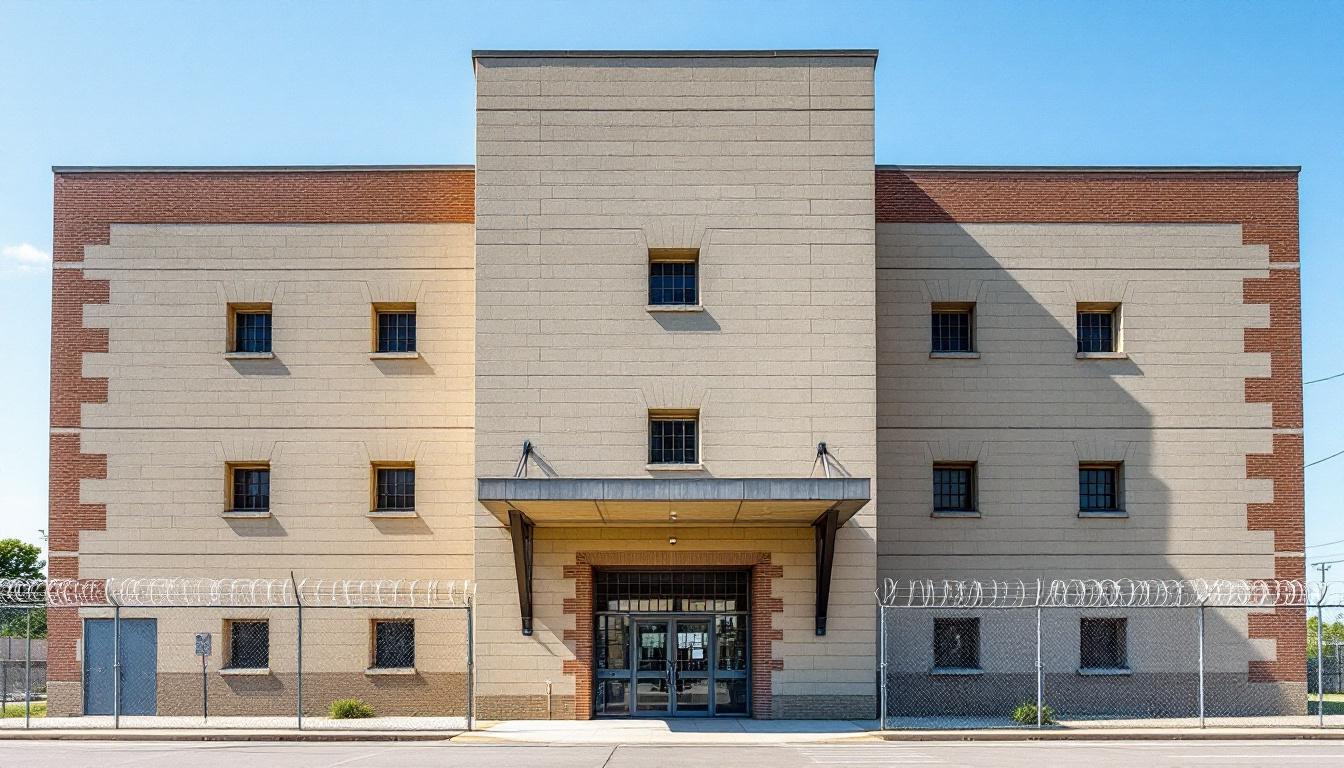
Quick Navigation
How to contact an inmate at San Benito County Jail
This comprehensive guide will walk you through how to connect with an inmate at San Benito County Jail. Follow the steps below to find an inmate and send letters and photos:
- Search for the inmate using our search tool below
- Create your account or log in to Penmate
- Write your message (up to 6,000 characters)
- Send instantly - inmates receive printed copies daily
Find an Inmate
Search for an inmate to start communicating today
Tip: You can search by first name, last name, or inmate ID number
To contact a person at San Benito County Jail start by searching for the person on the official facility website. Perform a search by following these steps:
- Step 1: Enter their first name and last name into the search form and click "Search"
- Step 2: Locate their inmate record
- Step 3: Write down their Inmate ID and any housing information provided
Important! Be sure to enter the person's full name. Nicknames should not be used.
How to Send Messages to Inmates

You can use your phone or computer to send emails, letters, and photos to an inmate. Messages are sent electronically to inmate tablets or kiosks at the facility. If you would like to send a message, start by searching for an inmate at San Benito County Jail.
Sending Photos and Postcards

A great way to send love and support to a loved one at San Benito County Jail is to send photos and postcards. It only takes a few minutes to send photos from your phone and it makes a huge difference. You can also mail postcards with words of support and inspiration, or design your own postcard for special moments like birthdays and holidays.
Important! Be sure not to send any explicit photos or they may not be approved by the facility. You can also use a photo printing app like Penmate to make sure your photos are printed at the correct size (4x6 or 3x5) and are mailed according to the rules and regulations of San Benito County Jail.
Frequently asked questions about San Benito County Jail
-
How long does it take to deliver a message?
If you're sending an email message your letter is usually delivered within 24-48 hours. For messages sent via mail you should expect delivery within 3-7 days. All messages will need be approved by San Benito County Jail.
-
How much does it cost to send a message to San Benito County Jail?
You can send a message free using your phone or mail a message via USPS for the price of a $0.60 stamp and envelope. You can also purchase credits or e-stamps from services starting at $1.99.
-
What services can I use to contact an inmate at San Benito County Jail?
Penmate
You can use Penmate to send letters and photos to an inmate from your phone. It's an easy way to stay in touch during your loved one's incarceration. Use the inmate locator to find an inmate's location and contact information, then you can send messages within a few minutes.
Securus messaging
Securus may be another option for communicating with an inmate at San Benito County Jail. You can create a friends and family account and purchase credits to send messages. All messages will be reviewed and must be approved by the facility.
JPay
Some county jails and state prisons may support sending messages with JPay. You must register an account with the system, find your loved one, and purchase stamps to send messages. For some locations you can also attach photos.
Smart Jail Mail
You may also check if Smart Jail Mail is available at San Benito County Jail. Smart Jail Mail is operated by Smart Communications and has contracted with some state and county jails. After purchasing credits, your messages and photos are sent to the facility, printed out, and then handed out to your loved one.
-
What is the mailing address of San Benito County Jail?
Mailing address:
San Benito County Jail
710 Flynn Rd
Hollister, CA 95023
Phone: (831) 636-4060 -
What are the visiting hours at San Benito County Jail?
Visiting hours at San Benito County Jail vary by housing unit and security level. Generally, visits are scheduled on weekends and holidays, with some facilities offering weekday visits. Contact the facility directly at (831) 636-4060 or check their website for the current visiting schedule. Visits typically last 30-60 minutes and must be scheduled in advance.
-
What items are prohibited when sending mail to San Benito County Jail?
Prohibited items typically include: cash, personal checks, stamps, stickers, glitter, glue, tape, staples, paperclips, polaroid photos, musical or blank greeting cards, hardcover books, magazines with staples, and any items containing metal or electronics. Only send letters on plain white paper with blue or black ink. Photos must be printed on regular photo paper (no Polaroids). Always check with San Benito County Jail for their specific mail policies.
-
How do I send money to an inmate at San Benito County Jail?
You can send money to an inmate at San Benito County Jail through several methods: 1) Online using JPay, Access Corrections, or the facility's approved vendor, 2) Money orders mailed directly to the facility with the inmate's name and ID number, 3) Kiosks located in the facility lobby, or 4) Over the phone using a credit or debit card. Fees vary by method, typically ranging from $2.95 to $11.95 per transaction.
-
Can I schedule a video visit with an inmate at San Benito County Jail?
Many facilities now offer video visitation as an alternative to in-person visits. At San Benito County Jail, video visits may be available through services like Penmate, Securus Video Connect, GTL, or ICSolutions. Video visits typically cost $10-20 for 20-30 minutes and must be scheduled in advance. You'll need a computer or smartphone with a camera and reliable internet connection. Contact the facility for their specific video visitation policies and approved vendors.
-
What identification do I need to visit an inmate at San Benito County Jail?
All visitors must present valid government-issued photo identification such as a driver's license, state ID, passport, or military ID. Minors must be accompanied by a parent or legal guardian who can provide the minor's birth certificate. Some facilities require visitors to be on the inmate's approved visitation list, which may require a background check. Contact San Benito County Jail for specific ID requirements and visitor approval procedures.
-
How can I find out an inmate's release date?
To find an inmate's release date at San Benito County Jail, you can: 1) Use the online inmate search tool if available, 2) Call the facility's records department, 3) Contact the inmate's case manager or counselor, or 4) Have the inmate provide this information during a call or visit. For privacy reasons, some facilities only release this information to immediate family members.
Facility Overview
Official Website

About San Benito County Jail
Comprehensive programming and individualized support services form the foundation of operations at San Benito County Jail, CA, where a collaborative approach to corrections emphasizes measurable outcomes for both community safety and personal development. Located in Hollister, this CA correctional facility integrates evidence-based practices with traditional security protocols, creating an environment where individuals services encompass educational opportunities, substance abuse treatment, and reentry preparation programs designed to reduce recidivism and strengthen community connections.
The facility's commitment to security and rehabilitation reflects broader trends within California's correctional landscape, where county jails increasingly serve as vital components in a comprehensive justice system focused on sustainable change. Through partnerships with local service providers and community organizations, the county jail typically offers vocational training, mental health counseling, and life skills development programs that prepare individuals for successful reintegration into the greater Hollister area and surrounding San Benito County communities.
Operational excellence at this correctional facility stems from a recognition that effective rehabilitation requires addressing the underlying factors that contribute to criminal behavior, while maintaining the secure environment necessary for public safety. The facility's approach generally includes case management services, family reunification support, and transitional planning that connects individuals with housing, employment, and ongoing treatment resources, creating pathways to positive outcomes that benefit both participants and the broader Pacific region community.
Programs & Services
Recognizing that meaningful change requires a multifaceted approach, San Benito County Jail emphasizes comprehensive programming that addresses the diverse needs of individuals in custody. The facility's philosophy centers on providing varied pathways for personal development, understanding that each person may benefit from different combinations of educational, vocational, and therapeutic interventions. This holistic framework typically encompasses opportunities designed to build practical skills, address underlying issues, and foster personal growth during incarceration.
Educational initiatives often form the cornerstone of the facility's programming structure, with opportunities that may include basic literacy instruction, GED preparation, and continuing education courses. These academic foundations frequently complement vocational training opportunities that focus on developing marketable skills for post-release employment. Vocational programming typically emphasizes practical trades and certifications that align with regional employment demands, providing individuals with concrete skills that may enhance their prospects for successful community reintegration.
Therapeutic and support services represent another crucial dimension of the facility's comprehensive approach to individual development. Sex offender treatment programs may be available for qualifying participants, addressing specific behavioral patterns through structured therapeutic interventions. Also, rehabilitation programs often encompass various aspects of personal development, including time management skills that help individuals structure their daily routines and develop healthy habits. These support opportunities typically work in conjunction with other programming elements to create a cohesive framework for addressing the complex factors that may contribute to criminal behavior.
Daily Life & Visitation
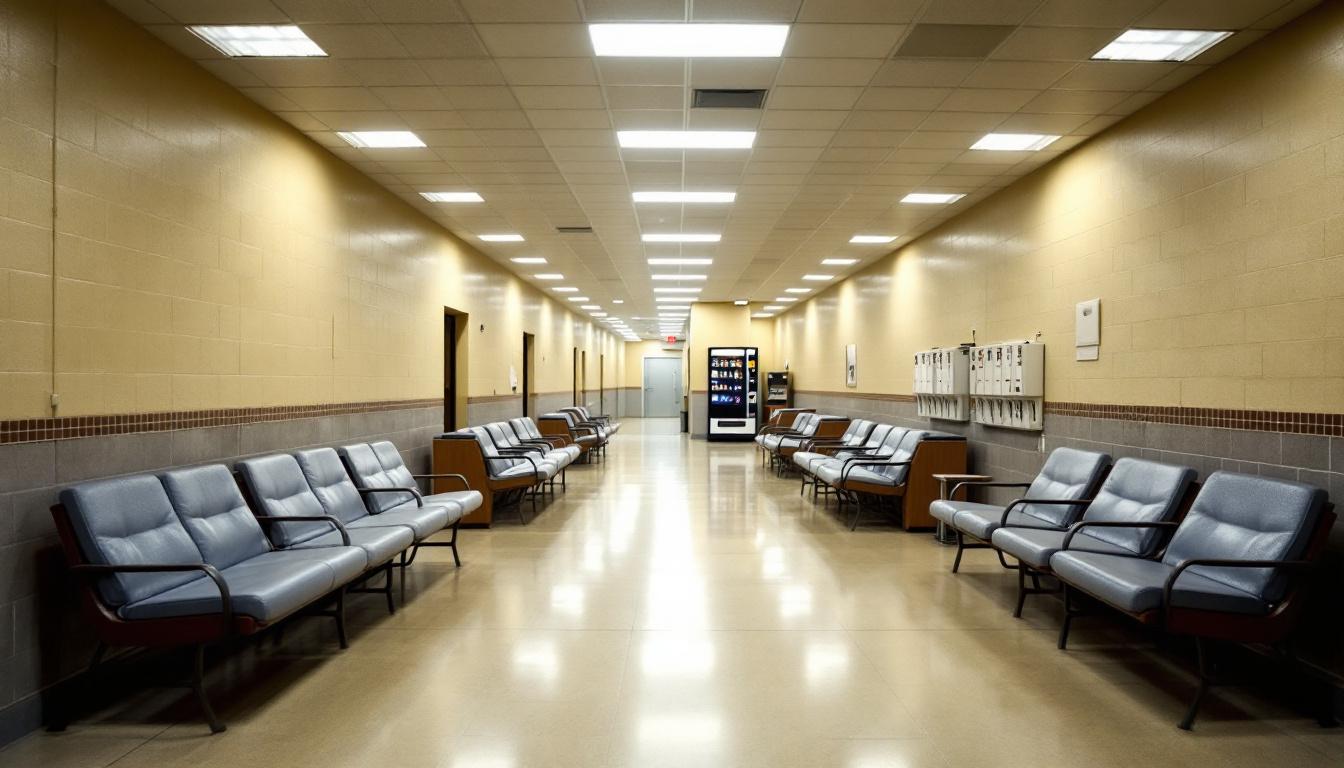
The rhythmic sound of meal carts rolling through housing units marks the passage of time for individuals housed at San Benito County Jail, where each day unfolds within a carefully structured framework designed to maintain order while providing essential services. Today's routine typically begins with an early morning count, followed by breakfast service and the gradual opening of various facility areas as individuals move through their scheduled activities. Consistently throughout the week, the facility operates on a predictable schedule that includes designated times for meals, recreation, medical services, and programming, helping residents establish a sense of routine during their stay.
Living accommodations within the facility generally consist of housing units that may range from single cells to dormitory-style arrangements, depending on classification levels and available space. Individuals typically receive basic bedding, personal hygiene items, and have access to limited personal property storage within their assigned living areas. Also available throughout the facility are common areas where residents can participate in recreational activities, watch television, or engage in social interaction during designated periods. However, movement between areas remains controlled and supervised, with individuals required to follow specific procedures when transitioning from one location to another.
Structured programming schedules offer various opportunities for personal development, including educational classes, vocational training, and counseling services that may be available depending on length of stay and individual needs. Work assignments within the facility typically include kitchen duties, laundry services, and general maintenance tasks that provide individuals with productive activities while contributing to facility operations. Also important to daily life are communication opportunities with family members through scheduled visitation periods, telephone access, and correspondence, which help maintain crucial connections to support systems outside the facility walls.
Ready to Connect?
Start communicating with your loved one today
Search for an Inmate
